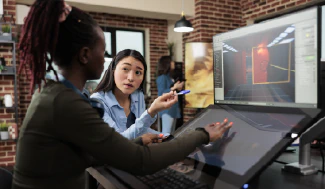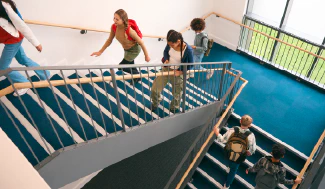Active Shooter Drills in School and on Campus: Why Preparedness Matters

As campus safety becomes an increasingly urgent issue, schools and universities prioritize proactive measures to protect students and staff. One of the most critical steps in emergency preparedness is the implementation of active shooter drills. These tests provide hands-on experience in responding to an active shooter situation and can make a significant difference when a real-life crisis occurs.
Why Active Shooter Drills Are Essential
Active shooter drills are designed to simulate real-life crisis scenarios, helping students, teachers and staff understand how to react quickly and efficiently. According to the National Center for Educational Statistics, “there were a total of 50 active shooter incidents at elementary and secondary schools and a total of 18 active shooter incidents at postsecondary institutions” between 2000 and 2022. Those incidents resulted in “328 casualties (131 killed and 197 wounded)” amongst elementary and secondary schools and “157 casualties (75 killed and 82 wounded)” in postsecondary institutions. In many of these situations, individuals on-site had to act before law enforcement could arrive, making emergency preparedness the difference between life and death.
Types of Active Shooter Drills
There are several active shooter drills, each focusing on different response tactics. Many states provide guidance on the types of active shooter drills schools need to conduct and the frequency of drills. Below is a list of the most popular drills.
- Run, Hide, Fight - This model, promoted by the Department of Homeland Security, follows a hierarchy of response: first, run to safety if possible; second, hide if escape is not an option and third, as a last resort, fight to defend yourself.
- ALICE Drills (Alert, Lockdown, Inform, Counter, Evacuate) - ALICE drills take a more comprehensive approach by emphasizing the importance of reporting the incident and giving participants multiple response options depending on the situation. If lockdown isn’t the safest option, participants are encouraged to counter the shooter through distraction or escape, maximizing survival chances.
- Lockdown Drills - Lockdown drills are a staple of school safety practices. They teach students and staff to secure classrooms or offices, lock doors, turn off lights and remain out of sight. The primary goal is to make it difficult for a shooter to access anyone inside until law enforcement arrives.
The Impact of Active Shooter Drills on Outcomes
The impact of active shooter drills on real-life emergencies is profound. Schools that regularly practice drills experience significantly fewer casualties in actual active shooter incidents. A study published in The Journal of School Violence in 2022 found that “during mass shootings, schools that successfully implemented lockdowns had 60% fewer total casualties, with 79% reductions in victims pronounced dead at the scene even after controlling for other variables (e.g., presence of security, access control, implementation error).” The study also noted that repeated practice was key in students and staff properly implementing lockdowns. This reduction is attributed to faster, more coordinated responses that reduce chaos during an attack.
Active Shooter Drills Help Students and Staff Respond Appropriately
During the 2022 Oxford High School shooting in Michigan, students and law enforcement officials directly credited active shooter drills with helping save lives. As the 16-year-old shooter opened fire, lockdown procedures immediately took effect. Having undergone active shooter training, students and staff quickly barricaded doors and awaited the arrival of law enforcement officers.
Four students tragically lost their lives during the shooting, however, Oakland County Sheriff Michael Bouchard commented, “It is also evident from the scene that the lockdown protocols, training and equipment Oxford schools had in place saved lives.”
Oxford High School Student Joyeux Times agreed stating, “I think the training is helpful… It saved a lot of students’ lives.”
The event reaffirmed how these drills instill calm in moments of chaos, giving everyone a fighting chance in the face of a real threat.
Fostering a Culture of Preparedness
While the thought of an active shooter on campus is frightening, fostering a culture of preparedness can provide peace of mind. Regular active shooter drills, combined with campus safety initiatives such as panic buttons and safety apps, empower students and staff to respond quickly, efficiently, and confidently during an emergency.
Campuses should include debriefing sessions after each exercise to maximize the effectiveness of drills. These sessions allow participants to reflect on their actions, identify areas for improvement, reinforce their knowledge of proper procedures and enable participants to voice concerns if drills are negatively impacting students’ mental health.
Learn more about school safety measures at 911cellular.com.
Tags: “ campus safety” “ higher education safety” “school safety” “ school shootings”


